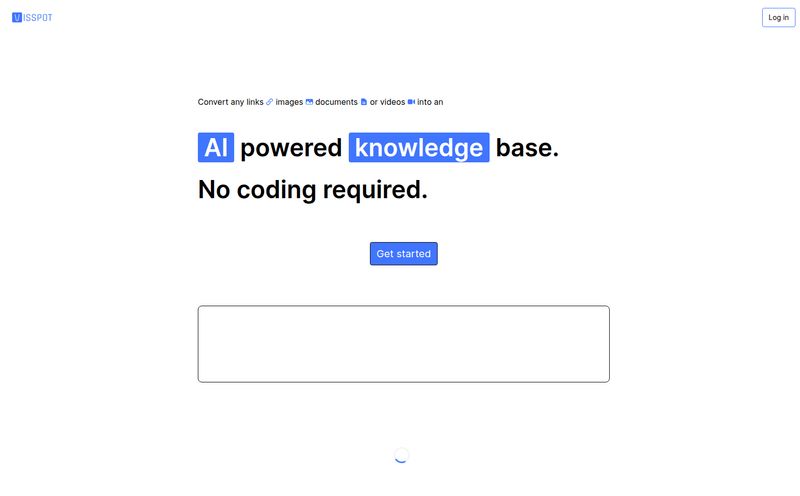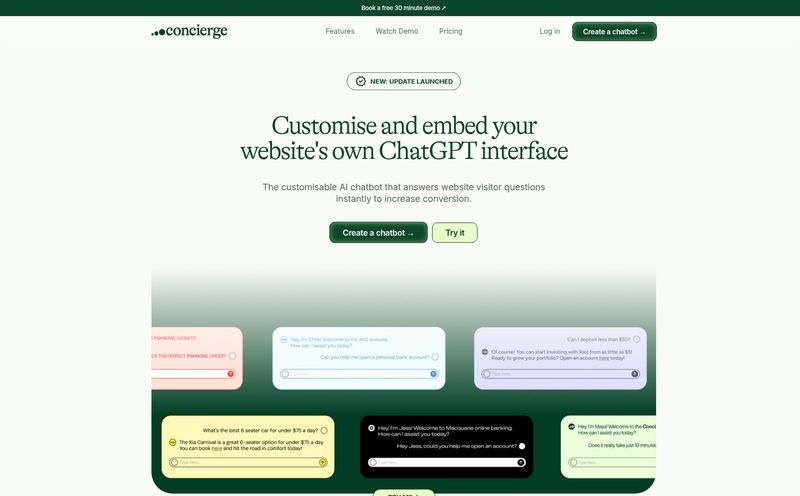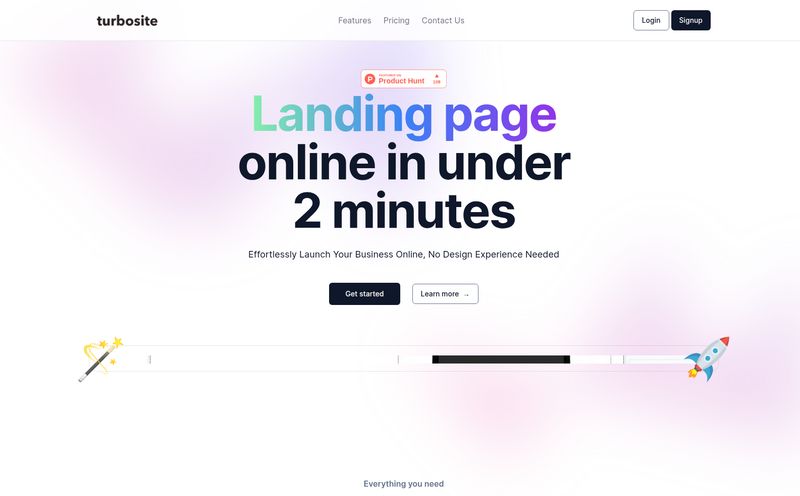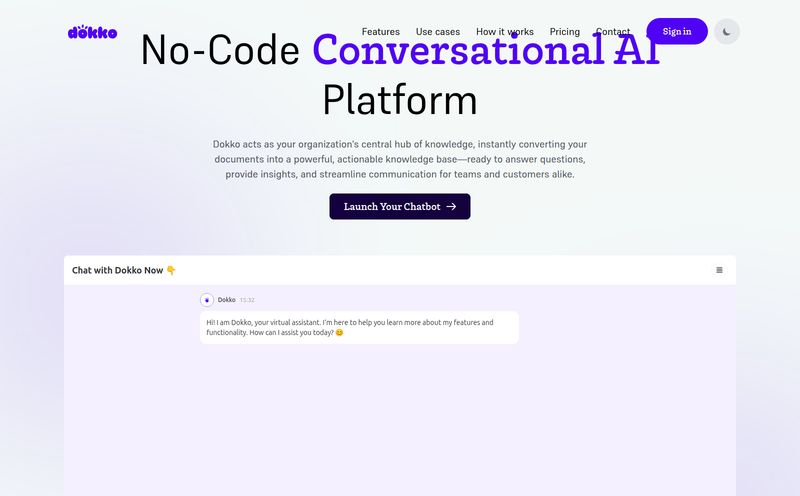When was the last time you were genuinely excited to open a marketing email? I'm not talking about the 50% off code you were waiting for, but the email itself. The design. The experience. For most of us, the answer is... a while. Maybe never.
For years, we've been stuck in this cycle of static, one-way communication. We design a pretty banner, write some compelling copy, slap a big ol' button at the bottom and pray for clicks. It's a formula. A tired one. We track open rates and click-throughs, but engagement? Real, meaningful interaction? That’s the holy grail we're all chasing.
So, when a tool like MailReact lands on my radar, claiming to turn our flat, lifeless emails into interactive “mini-websites,” my professional curiosity piques. It promises an AI-powered, no-code way to build emails that do more. But does it live up to the hype? I decided to take a closer look.
So, What Exactly is MailReact?
At its core, MailReact is an AI-powered platform designed to create interactive emails. Think of it this way: instead of your email being a static flyer that directs people to your website, the email becomes a small part of your website. It's built on the idea that if you reduce friction—like, say, the friction of having to open a new tab to fill out a form—you’ll get way better results. And I have to say, the logic is sound.
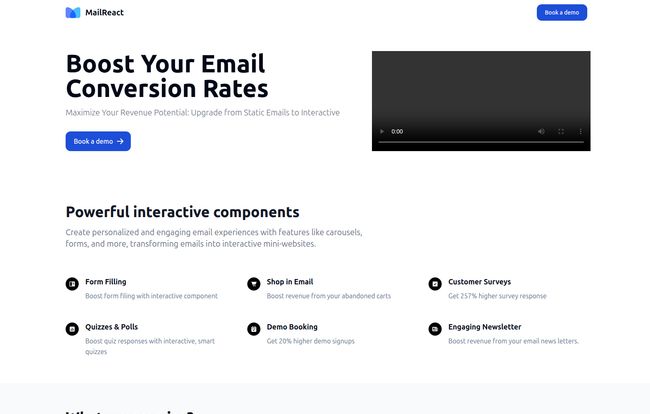
Visit MailReact
They offer a no-code builder, which is music to the ears of marketers like me who would rather spend time on strategy than wrestling with HTML. The goal is to let users interact with content—fill out surveys, browse product carousels, book a demo—all from the comfort of their inbox. It’s an ambitious promise, borrowing from the concepts of AMP for Email but aiming to make it accessible for everyone.
Breaking Out of the Box: The Interactive Components
This is where things get interesting. MailReact isn't just about adding a fancy GIF. It’s about embedding functional components directly into the body of the email. I've seen a few platforms try this, but MailReact's list of components seems pretty robust.
Forms and Surveys Without the Click-Through
This is a big one. How many times have you abandoned a survey because you had to click a link, wait for a page to load, and then start filling it out? MailReact lets you embed the form right there. Customers can leave a review, answer a quick poll, or fill out a lead gen form without ever leaving their email client. The promise of a 2.37x higher survey response is a bold claim, but I can see how removing that extra step could make a massive difference.
The 'Shop in Email' Dream
For my friends in e-commerce, this is the main event. Imagine a customer gets an abandoned cart email. Instead of just showing a static picture of the product, you send an interactive email where they can browse a carousel of related items, select a size or color, and maybe even complete the purchase. It's about closing the deal at the moment of highest intent. It turns a simple reminder into a dynamic storefront. This is the kind of stuff that can genuinely reduce cart abandonment.
Quizzes, Polls, and Booking Demos
Beyond sales, there's a huge opportunity for engagement. You could run a fun quiz to segment your audience, let them vote in a poll to help you decide on a new product feature, or let a B2B lead book a demo time from a calendar right in the email. It's all about providing instant value and interaction. No more “Click here to see our available times.” Just click a time, and you’re done. Smooth.
The Magic of Real-Time Updates
Okay, this feature really caught my eye. MailReact claims that its emails can be updated after they’ve been sent. Let that sink in. You send a promotional email for a flash sale, and an item sells out. Normally, that link is dead, leading to a frustrating user experience. With MailReact, you could theoretically update the email in real-time to show the item is “Sold Out” or replace it with another product. It’s like turning your sent email from a printed photograph into a live-streaming video. The potential applications for time-sensitive offers or event details are huge.
The Good, The Bad, and The Missing
No tool is perfect, and I always approach new platforms with a healthy dose of skepticism. After digging around, here's my honest take.
What I Really Like About MailReact
The core concept is a massive plus. The move towards interactivity is the natural evolution of email marketing. The no-code builder makes this powerful tech accessible to small businesses and marketing teams without a dedicated developer. The potential to increase engagement and conversion rates isn't just marketing fluff; it's based on the solid UX principle of reducing friction. I’ve seen enough A/B tests in my career to know that even one less click can make a world of difference.
A Few Caveats and The Elephant in the Room
Now for the reality check. The biggest challenge with interactive email has always been compatibility. Will these fancy components work in every email client? Outlook has historically been a stick in the mud for even basic HTML. Apple Mail, Gmail, and others have better support, but it's not universal. MailReact doesn’t provide a detailed compatibility list on its homepage, which is a concern. A feature is only as good as the number of people who can actually use it. It's something you'd definitely need to clarify in a demo.
And now, the big one: pricing. There is absolutely no mention of it on their site. None. The “Book a demo” button is everywhere, which tells me they're likely targeting mid-market to enterprise clients with a custom pricing model. When I tried to find a pricing page or some documentation, I was met with a... well, a 404 error. Not the best look for a tech company. This lack of transparency is a bit of a red flag for me. I get the 'contact us for pricing' model, but not even a hint at tiers or starting points can be off-putting for smaller businesses trying to see if it's even in their budget.
Frequently Asked Questions About MailReact
What is MailReact in simple terms?
MailReact is a tool that lets you build emails with interactive elements like forms, quizzes, and shopping carousels directly inside the email itself, using a drag-and-drop, no-code builder. The goal is to get more people to engage with your emails without making them click away to your website.
Is MailReact easy to use for someone who can't code?
Yes, that’s one of its main selling points. It's designed as a “no-code” platform, meaning marketers can create these complex, interactive emails without needing to write any HTML or CSS themselves.
Will these interactive emails work in all my subscribers' inboxes?
This is the most important question. While modern clients like Gmail and Apple Mail have good support for interactivity, older clients, particularly some versions of Outlook, may not display the interactive elements correctly. It’s critical to ask for a compatibility list and understand how MailReact handles fallback for unsupported clients.
How does MailReact use AI?
The site mentions it's an "AI-powered interactive email template generator." This likely means the AI assists in generating the layout, copy, or design of the interactive templates based on your goals, streamlining the creation process.
How much does MailReact cost?
As of this writing, pricing information is not publicly available on their website. You need to book a demo to get details on their plans and pricing structure. This suggests it might be geared towards businesses with a larger budget.
Final Thoughts: Is It Worth Booking the Demo?
So, where does that leave us? I’m genuinely excited by the idea of MailReact. Email marketing is long overdue for a shake-up, and interactive content is the most promising way forward. The platform seems to address a real need: making advanced, engaging emails easy to create for the average marketer.
However, the lack of transparency on pricing and client compatibility gives me pause. It’s like being shown a fantastic sports car but not being told the price or if it runs on regular gas.
My verdict? If you’re a mid-sized e-commerce brand or a B2B company heavily reliant on email for leads and you have the budget to explore premium tools, booking that demo is probably worthwhile. Go into it with a list of pointed questions, especially about compatibility and fallback behavior. For smaller businesses or solopreneurs, the lack of pricing info might be a sign to wait and see if they introduce more accessible tiers down the line.
MailReact could very well be a glimpse into the future of the inbox. A future that’s more engaging, more efficient, and a heck of a lot less boring. I, for one, am hoping they get there.
